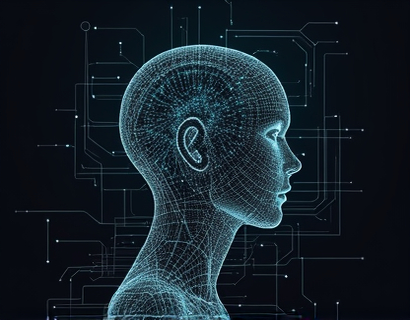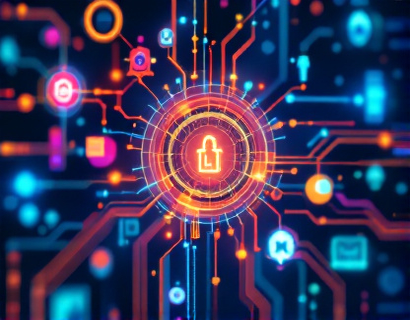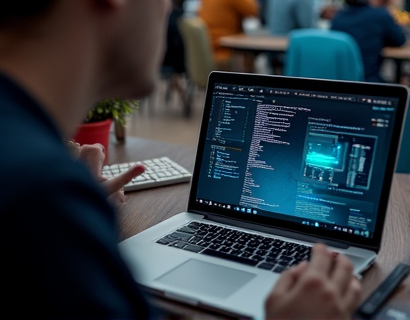Ethereum Layer 2: Unlocking the Future of Scalability and Interoperability for Developers and Enthusiasts in 2025
The Ethereum ecosystem has been at the forefront of blockchain innovation, continuously evolving to address the growing demands of developers and users. As the network has matured, one of the most significant challenges it has faced is scalability. The original Ethereum protocol, while revolutionary, has limitations in terms of transaction throughput and gas costs, which can hinder the adoption of decentralized applications (dApps) and smart contracts. To overcome these limitations, the community has turned to Layer 2 (L2) solutions, which aim to enhance scalability, reduce costs, and improve interoperability. This comprehensive guide will delve into the world of Ethereum Layer 2, providing essential insights and updates for developers and enthusiasts to navigate the dynamic and evolving Ethereum landscape in 2025.
Layer 2 solutions are designed to operate on top of the main Ethereum blockchain, addressing its scalability issues without compromising the security and decentralization of the underlying network. These solutions offload a significant amount of computation and storage from the main chain, allowing for faster and cheaper transactions. The primary goal of L2 is to increase the number of transactions Ethereum can process per second, thereby reducing congestion and lowering fees.
Understanding Layer 2 Solutions
To fully grasp the potential of Layer 2, it's crucial to understand the different types of solutions being developed. The main categories include state channels, sidechains, and rollups. Each of these approaches has its unique mechanisms and use cases, and they are not mutually exclusive; in fact, they often complement each other in the Ethereum ecosystem.
State Channels
State channels, also known as payment channels, allow two or more parties to conduct multiple transactions off the main blockchain. The initial setup involves a deposit of funds into a smart contract, and subsequent transactions are executed off-chain. Once the channel is closed, the final state is recorded on the main chain, which significantly reduces the load on the network. State channels are particularly useful for applications requiring frequent and small transactions, such as gaming and micropayments. They offer near-instant transaction times and minimal fees, making them an attractive option for developers looking to enhance user experience.
One of the most well-known implementations of state channels on Ethereum is the Lightning Network-inspired Ethereum Lightning Network (ELN). ELN enables users to open channels, send and receive Ether and tokens, and close channels when transactions are complete. This solution is especially beneficial for decentralized finance (DeFi) applications where high-frequency trading and low-latency transactions are essential.
Sidechains
Sidechains are independent blockchains that are linked to the Ethereum main chain through two-way pegs. These pegs allow assets to be transferred between the main chain and the sidechain, ensuring seamless interoperability. Sidechains can have their own consensus mechanisms and features, which can be optimized for specific use cases. This flexibility makes sidechains a versatile tool for scaling Ethereum applications.
A prominent example of a sidechain project is Polygon (formerly Matic Network), which provides a scalable layer for Ethereum-compatible dApps. Polygon uses a combination of sidechains and rollups to achieve high transaction throughput and low fees. By offloading transactions to sidechains, Polygon can process thousands of transactions per second, making it suitable for a wide range of applications, from DeFi to non-fungible tokens (NFTs).
Rollups
Rollups are perhaps the most promising and widely adopted Layer 2 solutions for Ethereum. They work by bundling multiple transactions into a single transaction on the main chain, significantly reducing gas costs and increasing transaction speed. There are two main types of rollups: Optimistic Rollups and ZK Rollups.
Optimistic Rollups
Optimistic Rollups assume that all transactions on the rollup are valid until proven otherwise. They collect a batch of transactions off-chain and publish a batch state to the main chain. If any transaction is found to be invalid, a challenger can prove it within a specified time frame. If no challenge is raised, the transaction is considered valid, and the rollup is confirmed. This approach offers a good balance between security and scalability, with transaction times reduced to seconds and fees significantly lower than on the main chain.
One of the leading Optimistic Rollup projects is Arbitrum, which has gained significant traction in the Ethereum community. Arbitrum provides a full-stack solution for building scalable dApps, offering features like smart contract execution, asset locking, and off-chain computation. Its high throughput and low fees make it an attractive option for developers looking to deploy scalable applications without compromising on security.
ZK Rollups
ZK Rollups, or Zero-Knowledge Rollups, use zero-knowledge proofs to bundle and verify transactions off-chain. These proofs ensure that all transactions are valid without revealing the transaction details, providing a higher level of security and privacy. ZK Rollups can achieve even higher transaction throughput and lower fees compared to Optimistic Rollups, making them ideal for applications requiring the highest performance.
ZK Rollups are still in the early stages of adoption but show great promise. Projects like StarkWare and Scalar are leading the way in developing ZK Rollup solutions for Ethereum. These solutions are particularly well-suited for complex DeFi protocols and NFT marketplaces, where security and efficiency are paramount.
Interoperability and Cross-Chain Solutions
Interoperability is a critical aspect of the Ethereum ecosystem, enabling different blockchain networks to communicate and transfer assets seamlessly. Layer 2 solutions play a vital role in enhancing cross-chain interoperability, allowing developers to build applications that span multiple blockchains. This interoperability is essential for creating a unified decentralized ecosystem where users can interact with a wide range of dApps and services.
One of the key cross-chain Layer 2 solutions is Polkadot, which, while not exclusively an Ethereum L2 project, integrates well with Ethereum's ecosystem. Polkadot's relay chain connects multiple parallel chains (parachains), each with its own specialized functionality. Through interoperability bridges, Ethereum assets can be transferred to and from Polkadot parachains, enabling seamless interaction between different blockchain environments.
Another important cross-chain solution is Cosmos, which uses the Inter-Blockchain Communication (IBC) protocol to facilitate communication between its own blockchains and other networks, including Ethereum. Cosmos Zones can act as sidechains to Ethereum, allowing for the transfer of assets and data while maintaining the security and decentralization of the main chain.
Developer Tools and Ecosystem Support
For developers looking to leverage Layer 2 solutions, a robust ecosystem of tools and resources is essential. Various platforms and frameworks have emerged to simplify the development process, making it easier to build scalable and interoperable applications.
For Optimistic Rollups, frameworks like SushiSwap's SushiRoll and Uniswap's V3 provide built-in support for Arbitrum and other Optimistic Rollup networks. These frameworks offer pre-built contracts and APIs, reducing the development overhead and ensuring compatibility with the latest L2 protocols.
For ZK Rollups, development tools like StarkNet and Scalar SDK are available. StarkNet is a ZK Rollup development framework that provides a comprehensive set of tools for building scalable and secure dApps. Scalar SDK, on the other hand, offers a high-level abstraction for developing on ZK Rollup networks, making it accessible to developers with varying levels of expertise.
Interoperability tools such as Wormhole and Bridge.Network facilitate asset transfers between Ethereum and other blockchains, including Polkadot and Cosmos. These services provide easy-to-use APIs and wallets, enabling developers to integrate cross-chain functionality into their applications with minimal effort.
Future Prospects and Challenges
The future of Ethereum Layer 2 is bright, with ongoing developments and innovations addressing current challenges and opening new possibilities. One of the primary challenges is the complexity of implementing and integrating L2 solutions, which can be a barrier for smaller developers and projects. However, the growing ecosystem of tools and frameworks is gradually simplifying this process.
Another challenge is the need for standardization and interoperability across different L2 solutions. While projects like Polkadot and Cosmos are making strides in this area, more collaboration and consensus are needed to create a truly interconnected decentralized ecosystem.
Looking ahead, the Ethereum community is exploring advanced L2 solutions such as Plasma and Sharding, which promise even greater scalability and efficiency. Plasma, for instance, involves creating a tree-like structure of child chains that are periodically settled on the main chain, while Sharding splits the network into smaller, parallel chains to process transactions in parallel.
In conclusion, Layer 2 solutions are transforming the Ethereum ecosystem by addressing scalability, reducing costs, and enhancing interoperability. Developers and enthusiasts have a wealth of tools and resources at their disposal to build innovative and scalable applications. As the ecosystem continues to evolve, staying informed and adaptable will be key to thriving in the dynamic world of Ethereum and blockchain technology.










































